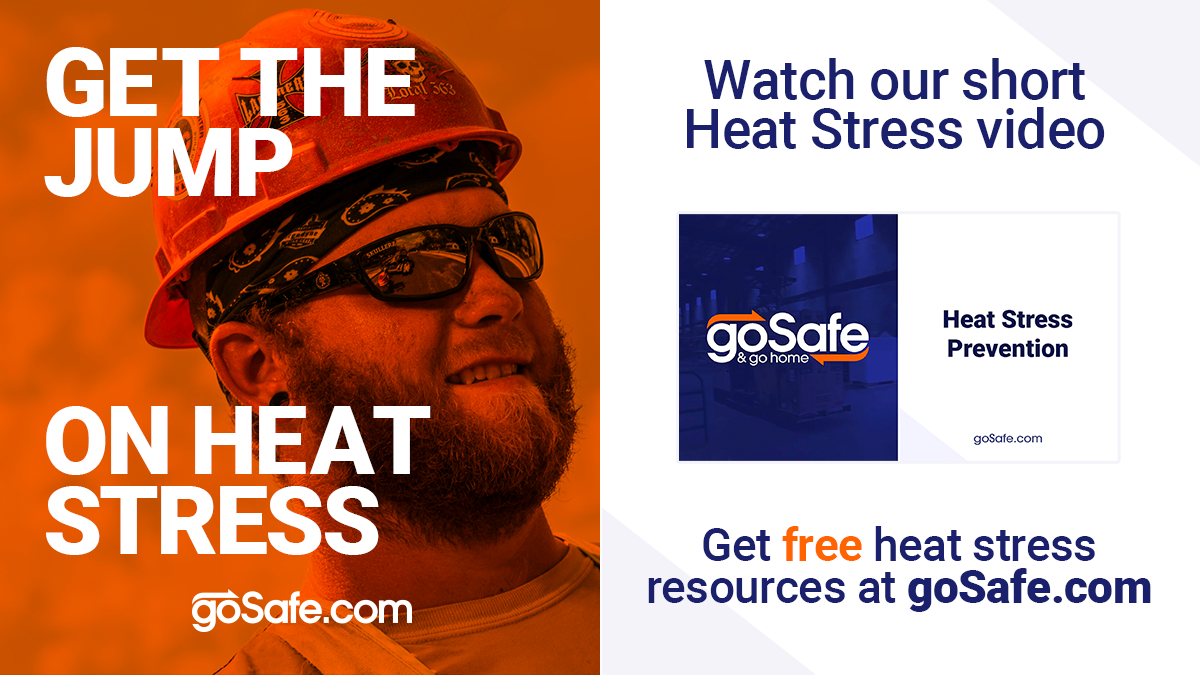South central Texas can be a hotbox any time of year, but never more so than in the summer. With the average daily temperature peaking between 91-95 degrees Fahrenheit between June and August, heat stress is a constant hazard for workers there.
According to the Bureau of Labor Statistics, there were 43 work-related deaths due to environmental heat exposure in 2019. This was lower than the high of 61 deaths in 2011 but higher than the number in all but one year from 2012 to 2018. Fifty-seven deaths (16.6 percent) occurred to workers ages 55 to 64 from 2011 to 2019. During that period, 144 workers (41.9 percent) died from environmental heat exposure while they were engaged in construction, repair, or cleaning, and 54 workers (15.7 percent) died while conducting materials handling operations.
The reality is that if climate trends continue, heat stress is only going to worsen.
Heat-Related Illnesses
When heat is a hazard, heat-related illnesses (HRIs) may develop. HRIs come in many forms, but the most common HRIs include:
- Heat Rash: Clogged sweat ducts under the skin can cause heat rash, which manifests itself as red, blister-like eruptions or itchy bumps
- Heat Cramps: Rapid sweat loss when an individual is sweating profusely that can lead to painful spasms, usually in the legs or abdomen, known as heat cramps
- Heat Exhaustion: Usually occurs over the course of a few days and can include headaches, weakness, mood changes, feeling sick, extreme sweating and clammy skin
- Heat Stroke: The most severe HRI can include pale skin, nausea, vomiting, confusion and a fever of at least 104 degrees.
It’s important to be aware of these HRI symptoms because a quick response can save a life.
An Indoor AND Outdoor Hazard
Outdoor workers encounter a variety of diverse environments and often suffer the most from extreme temperatures. But, workers in poorly ventilated or non-air conditioned indoor worksites deal with heat stress as well.
Prevention is Key
Heat-related illness is a serious issue for workers, worksite managers, and administrators, but it’s also 100% preventable.
Solutions may include:
- Access to shade or ventilated cooling areas
- Access to drinking water and electrolytes
- Education and training for workers and supervisors
- Written procedures in case of emergency
- Personal protective equipment (PPE)
Shade
Employers should designate refuge areas from the heat. Such zones should have shade, fluids for drinking and an air conditioned (AC) room or a well-ventilated zone where workers can rest. Tents, fans, AC-equipped trailers and drinking stations are also effective solutions.
Hydration
Workers can lose an average of 2-3 gallons of fluid through sweat while working in heat. Hydration before, during and after shifts is critical. When replenishing, OSHA recommends one cup of water every 15 minutes. An easy way to detect early signs of dehydration is by monitoring urine color. The darker it is, the more dehydrated you are.
Education & Training
Education is vital to any successful HRI prevention program. Specific objectives for both workers and supervisors should be clearly outlined and enforced.
For workers, heat stress training should be required for all new hires, as well as for current staff at the beginning of every warm weather season. It should cover:
- Environmental and personal risk factors for heat-related illness
- Importance of hydration and location of water
- Importance of "acclimatization" which means temporary adaptation of the body to work in a new environment
- Different types of heat-related illness and their common signs and symptoms
For supervisors, training should occur prior to starting in an administrative role and before the start of every warm season. It covers best practices for which a supervisor is responsible, including:
- Providing and maintaining sufficient quantities of water and sources of shade
- Ensuring training or training materials are provided for each new employee on the first day of employment
- Enforcing "acclimatization"
- Educating the workforce on procedures to carry out when an employee exhibits symptoms consistent with a possible HRI
Written Worksite Procedures
Written emergency procedures should be posted at all jobsites, so that they are available for workers and any state OSHA representatives to see. While not required in Texas, many employers follow California’s OSHA standard (Title 8, section 3395) addressing heat stress prevention, which calls for employers to:
- Provide access to water and shade
- Monitor the weather
- Institute high-heat procedures and address lack of acclimatization
- Train all employees and supervisors
- Respond to heat-related illnesses without delay
- Provide first aid and emergency services
- Provide clear and precise directions to the worksite
How PPE Can Help
Providing quality PPE is another way to limit worker susceptibility to HRIs and keep them safe. Brimmed hats and light-colored material can reduce direct exposure to the sun, and fast-drying absorptive material helps keep workers cool and trap sweat, preventing it from getting in their eyes and on their hands.
Evaporative cooling bandanas, headbands, triangle hats and hard hat inserts keep workers cool using an evaporative cooling process that holds a significantly cooler temperature than ambient air. Placing either one of these products in an area where large blood vessels are located near the surface of the skin can keep core body temperature in check. Cooling vests can also be worn to help maintain a safe core body temperature, especially if an application requires workers to wear heavy protective gear such as body armor or full body protective suits.
The Keys to Cool
Providing proper training, facilities and equipment, knowing the early warning signs of HRIs and following steps to minimize workplace risks can help keep workers safe and productivity thriving – even when the heat is on.
*Article Provided by: Alsie Nelson, Product Manager of Ergodyne








